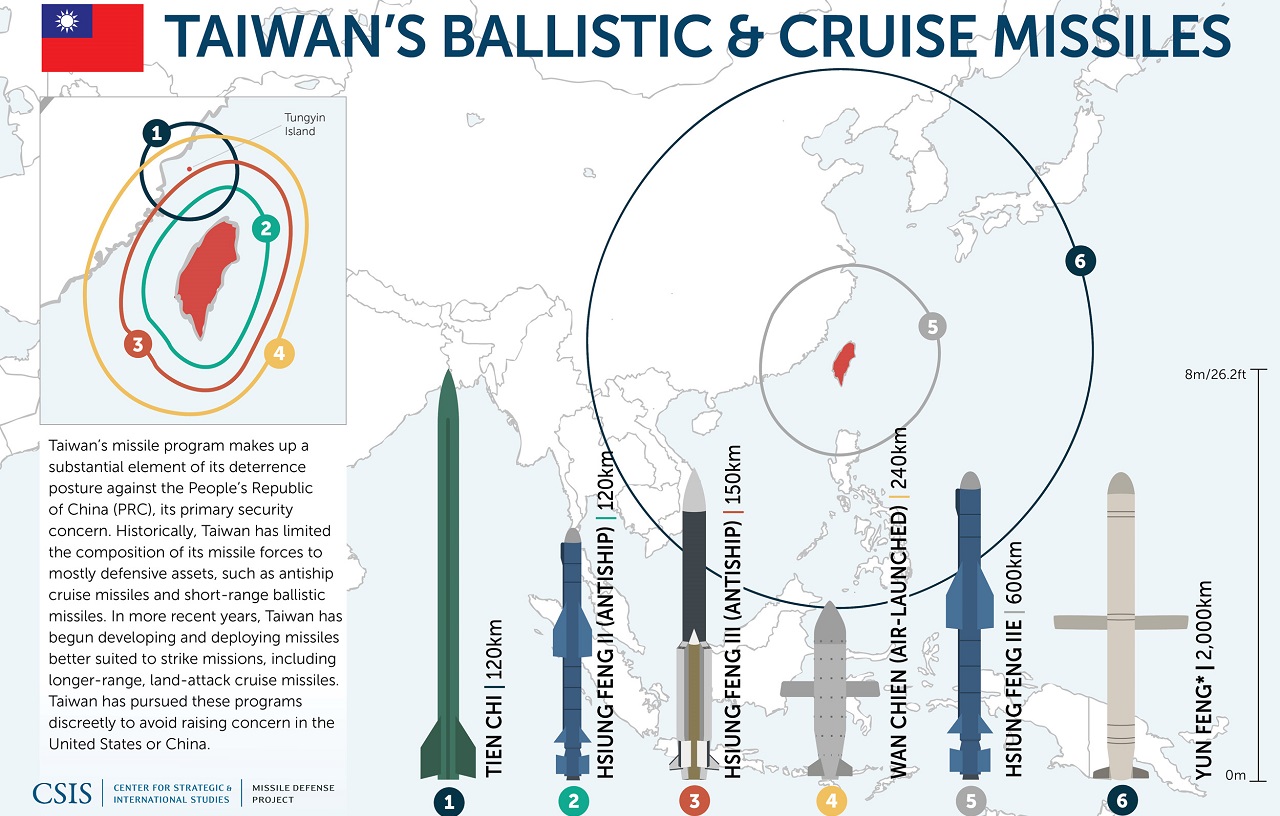The Hsiung Feng IIE is among Taiwan’s longest-range missiles. Developed by the National Chung-Shan Institute of Science and Technology, it is the only variant of the Hsiung Feng cruise missiles to be specifically designed for land-attack missions.
When paired with a U.S. military-grade GPS system, the missile can change course mid-flight to avoid interception, and it has a strike accuracy of 10 to 15 meters. The missile is based on a mobile land platform, and it is propelled by a solid-fuel booster and liquid-fuel turbojet engine.
Designed to Hit Mainland China
Development of the Hsiung Feng IIE began in 2001. The goal was to provide the Taiwanese military with a missile platform that could strike targets deep inside mainland China. Prior to the Hsiung Feng IIE program, most Taiwanese missiles had a range of just a few hundred kilometers, which limited Taiwan’s strike capabilities to coastal areas.
The extended range provided by this missile makes it possible for the Taiwanese military to target surveillance and reconnaissance assets, as well as radar, missile sites, airfields, and other critical Chinese military installations. It can also target mainland cities: With a reported range of 600 km, it can hit targets in Shanghai, Guangzhou, and Hong Kong. It could even hit the Three Gorges Dam.
The Hsiung Feng IIE has been described as giving Taiwan “offshore engagement” capabilities, and Taipei sought to produce more than 300 of the missiles. Earlier this year, the government announced plans to increase total missile production to 497 per year, up from the current 207. This plan would include increasing the stockpile of Hsiung Feng IIE cruise missiles.
Not a Direct Hsiung Feng Variant
While it is identified as part of the Hsiung Feng (Brave Wind) family of cruise missiles, the Hsiung Feng IIE wasn’t actually derived from the Hsiung Feng II. It is an entirely different design line, one that bears many similarities to the U.S. Tomahawk (RGM-109) cruise missile.
The official designation was a ploy to divert attention away from the goal of the project, which was to create a longer-range cruise missile with increased strike capability. The missile was successfully test-fired for the first time in early 2006, and it flew more than 500 km before hitting its target. An extended 800 km variant was tested in January 2008.
U.S. Pushback
Washington urged Taipei to be cautious as it developed the Hsiung Feng IIE, due to the weapon’s offensive capabilities. In fact, some military analysts have linked the missile’s production to the Pentagon’s refusal to sell F-16C/D fighter aircraft to the self-governed island.
Taiwan pushed the program forward nonetheless, and the changing regional security dynamics, which include Beijing’s expansion efforts in the South China Sea, have considerably lessened U.S. concerns over Taipei’s offensive missiles. In January of last year, Taiwanese officials announced that a number of the upgraded missiles have already been deployed.
A Senior Editor for 1945, Peter Suciu is a Michigan-based writer who has contributed to more than four dozen magazines, newspapers and websites. He regularly writes about military hardware, firearms history, cybersecurity and international affairs. Peter is also a Contributing Writer for Forbes. You can follow him on Twitter: @PeterSuciu.

